Lost and Found – Saving the Stoewer
In 1966, John Stanley was a university student with a holiday job sampling bore water on farms for the Mines Department. He also had a plan to find and restore a vintage car, so long as it was something unusual.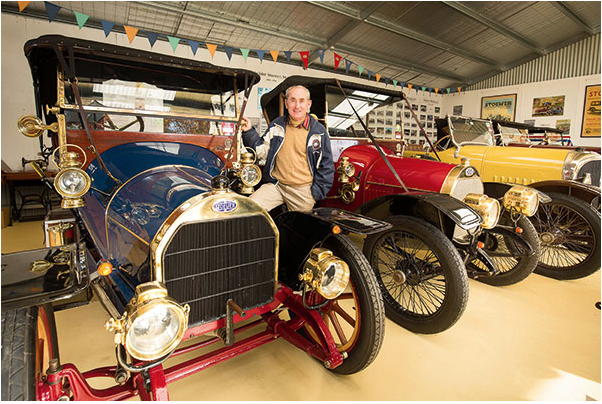
“I visited a lot of farms, drank lots of tea and ate lots of fruit cake,” John recalls. “And on each of those farms I checked for any cars in the shed.”
The journey begins
One day, on a farm near Minyip in the Wimmera region, he found what he’d been seeking. It was a dilapidated 1923 D3A Stoewer sports model, a German make the farmer had owned since new.
“I recalled having seen a Stoewer competing in the Kalorama Rally that went past our house in Heathmont when I was growing up,” John says, “so I recognised the name when I saw it in the shed.”
The Minyip farmer agreed to sell the car and mentioned another Stoewer, a 1922 D5 coupe, had been sold from a nearby farm two weeks earlier. “It had been owned by a farmer from Nhill, who had lost his farm during the Depression. To save the car from repossession, he took it to his brother’s farm, where it was walled in on the verandah, staying there for 36 years until the brother died and it was sold with his estate.
“In 1967, soon after buying my Stoewer, I wrote to the fellow who’d just bought that D5, as I wanted to contact anyone with information about Stoewer cars. But I didn’t get a reply.”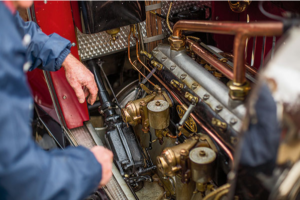
Then, one day in 1983, John received a letter. “Sorry to have been so long in replying,” it read. “The car is now at the Gold Coast in pieces. Do you want it?”
The 16-year gap hadn’t diminished John’s interest and he bought his second Stoewer. His collection has since grown to five, as he’s also acquired a 1911 B1, a 1913 C1 and a high-performance 1924 D5/78. Four of his cars are sole survivors of their type, while the 1913 C1 is one of only five left in the world.
Daimler and Benz
Stoewer was Germany’s third car manufacturer, after Daimler and Benz, formed by brothers Emil and Bernhard Stoewer in the town of Stettin in 1896. Their father was a manufacturer of sewing machines who built a steelworks that his sons turned into a car factory. By 1902 they were offering 22 electric cars and 12 petrol models in their catalogue.
“I was impressed by their high standard of engineering,” says John. “They took every opportunity to move towards perfection, to make their cars better even at the expense of making money.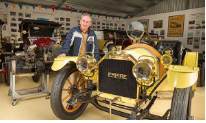
“By 1911 they had introduced a fully pressurised lubrication system. They developed a refined multi-plate clutch, a four-speed gearbox, brakes that really worked and eventually the first German front-wheel-drive car.”
While John’s original idea was to restore his cars himself, he ended up engaging professionals through a desire to preserve authenticity in such rare automobiles and recognition of the skill required to achieve this. Three of his Stoewers, the D5 coupe, the D5/78 and the pre-war B1, were restored by Greg Doyle in Armidale, NSW, during John’s tenure as an academic at the University of New England.
Cold War intrigue
Restoration of the D5 started in 2000 and was finished in 2006, just in time for John to take the car to Europe for the Return to Stettin Rally, a pilgrimage by Stoewer owners. Why that event happened and how John got there involves Cold War intrigue and geopolitics.
“Not long after buying my first Stoewer, I was contacted by an enthusiast living in East Berlin named Hans Mai,” John says. “He learned of me through an author researching a book about vanished car manufacturers and smuggled a letter out asking me to send information and photos of my car to a safe address in West Germany.”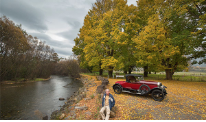
As a schoolboy, Hans Mai had regularly walked past the Stoewer factory in Stettin, collected brochures and photos about the cars and had kept them all. Stettin, in the Pomerania region, was then in Germany.
After World War II, Russia ceded control of the region to Poland. As German-speaking residents fled or were expelled, much of Stettin’s industrial infrastructure was destroyed or confiscated and Stoewer production ceased. In the process, the history of German firms such as Stoewer was obliterated from the Communist-era record books.
After the war, living in East Berlin, Hans Mai used his knowledge and collection of memorabilia to preserve the history of Stettin and Stoewer cars.
“Mai became the authority on Stoewers and he shared this knowledge with me, including details of 15 Stoewers he knew of in Australia, including a tractor,” John says. “I later discovered three more.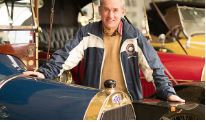
“We became friends, and until the Berlin Wall fell our correspondence was censored by the Stasi,” (the East German secret police). “Hans Mai introduced me to Jurgen Stoewer, son of the car company founder Bernhard, along with other members of the family.”
After the Cold War ended, the Return to Stettin Rally was organised for 2007. “I took the newly restored D5 to Europe and there were 14 Stoewers driven to Stettin for the occasion. Jurgen lived just long enough to see it happen,” says John.
When he relocated to Tawonga in Victoria’s Kiewa Valley, John established the Australian Stoewer Museum. “Along with the cars, the display of photographs and memorabilia provided by Jurgen Stoewer and Hans Mai is a tribute to a pioneering automotive family.”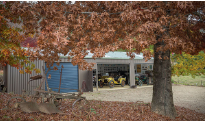 Story: Tony Lupton
Story: Tony Lupton
Photos: Shannon Morris
Published: RACV RoyalAuto Magazine, February 2018